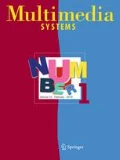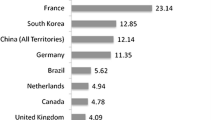Abstract
This paper proposes two models of Mean Opinion Score (MOS) estimation based on Thai users and the Thai language, referring to packet loss effects, for G.726 and G.729 codecs. Based on Thai users and Thai speech referring to packet loss effects in this work, the Absolute Category Rate (ACR) listening tests were conducted with 89 participants and 107 participants for the MOS estimation model development of G.726 and G.729 respectively, while the same tests were conducted with totally 60 participants for the model evaluation of both codecs. Packet loss rates were 0–15% for G.726 with 5 test conditions and G.729 with 6 test conditions; each condition was conducted with at least 16 participants. After gathering the data, the MOS estimation models for both codecs were simply created and then evaluated with the test sets, comparing Perceptual Evaluation of Speech Quality (PESQ), a popular measurement method. For one of the contributions of this study, after the models were evaluated using Mean Absolute Percentage Error (MAPE), it was found that the proposed models for G.726 and G.729 provided better performance than PESQ, particularly by reducing the MAPE by about 30% and 17% respectively, compared to PESQ.





Similar content being viewed by others
References
De Rango, F., Tropea, M., Fazio, P., Marano, S.: Overview on VoIP: subjective and objective measurement methods. Int. J. Comput. Sci. Netw. Secur. 6(1B), 140–153 (2006)
ITU-T.: ITU-T Recommendation P.800 Methods for subjective determination of transmission quality (1996)
Streijl, R.C., Winkler, S., Hands, D.: Mean opinion score (MOS) revisited: methods and applications limitations and alternatives. Multimed. Syst. 22(2), 213–227 (2016)
Baharudin, M.A.B., Quang, T.M., Kamioka, E.: Improvement of handover performance based on bio-inspired approach with received signal strength and mean opinion score. Arab J. Sci. Eng. 40, 1623–1636 (2015)
Daengsi, T., Wuttidittachotti, P.: VoIP-Quality of experience modeling: E-model and simplified E-model enhancement using bias factor. Multimed. Tools Appl. http://dx.doi.org/10.1007/s11042-016-3389-z. Accessed 12 April 2016
ITU-T.: Question 7/12—methods, tools and test plans for the subjective assessment of speech, audio and audiovisual quality interactions. http://www.itu.int/ITU-T/studygroups/com12/sg12-q7.html. Accessed 12 April 2016
Cai, Z., Kitawaki, N., Yamada, T., Makino, S.: Comparison of MOS evaluation characteristics for Chinese, Japanese and English in IP telephony. In: Proceedings of IUCS 2010, Beijing, pp. 1–4 (2010)
Wuttidittachotti, P., Khaoduang, P., Daengsi, T.: Development of a MOS estimation model for G.729 using listening-opinion tests with Thai speech referring to packet loss effects. In: Proceedings of ISCAIE 2014, Penang, pp. 29–32 (2014)
Daengsi, T., Wutiwiwatchai, C., Preechayasomboon, A., Sukparungsee, S.: IP telephony: comparison of subjective assessment methods for voice quality evaluation. Walailak J. Sci. Technol. 11(2), 87–92 (2014)
Daengsi, T., Khitmoh, N., Wattidittachotti, P.: VoIP quality measurement: subjective VoIP quality estimation model for G.711 and G.729 based on native Thai users. Multimed. Syst. http://dx.doi.org/10.1007/s00530-015-0468-3. Accessed 12 April 2016
Sodanil, M., Nitsuwat, S., Haruechaiyasak, C.: Thai word recognition using hybrid MLP-HMM. Int. J. Comput. Sci. Netw. Secur. 10, 103–110 (2010)
Daengsi, T., Wutiwiwatchai, C., Preechayasomboon, A., Sukparungse S.: A study of VoIP quality evaluation: user perception of voice quality from G.729, G.711 and G.722. In: Proceedings of IEEE CCNC—SS-QoE, Las Vegas, pp. 342–345 (2012)
Lindeberg, M., Kristiansen, S., Plagemann, T., Goebel, V.: Challenges and techniques for video streaming over mobile ad hoc networks. Multimed. Syst. 17, 51–82 (2011)
Goudarzi. M.: Evaluation of Voice Quality in 3G Mobile Networks. Thesis, University of Plymouth (2008)
Al-Akhras, M., Zedan, H., John, R., Almomani, I.: Non-intrusive speech quality prediction in VoIP networks using a neural network approach. Neurocomputing 72, 2595–2608 (2009)
Mahdi, A.E., Picovici, D.: Advances in voice quality measurement in modern telecommunications. Dig. Signal Process. 19, 79–103 (2009)
Ding, L., Lin, Z., Radwan, A., El-Hennaway, M., Goubran, R.: Non-intrusive single-ended speech quality assessment in VoIP. Speech Commun. 49, 477–489 (2007)
Karapantazis, S., Pavlidou, F.-N.: VoIP: a comprehensive survey on a promising technology. Comput. Netw. 53(12), 2050–2090 (2009)
ITU-T.: ITU-T Recommendation P.800.1 Mean opinion score (MOS) terminology (2006)
Telchemy.: Voice quality measurement. http://www.telchemy.com/appnotes/TelchemyVoiceQualityMeasurement.pdf. Accessed April 12 2016
ITU-T.: ITU-T Recommendation G.729, coding of speech at 8 kb/s using conjugate-structure algebraic-code-excited linear prediction (CS-ACELP) (2012)
ITU-T.: ITU-T Recommendation G.726, 40, 32, 24, 16 kbit/s adaptive differential PulseCode modulation (ADPCM) (1990)
ITU-T.: ITU-T Recommendation P.862, Perceptual evaluation of speech quality (PESQ): an objective method for end-to-end speech quality assessment of narrow-band telephone (2001)
Voznak, M., Rozhon, J.: Influence of atmospheric parameters on speech quality in GSM/UMTS. Int. J. Math. Model. Method. Appl. Sci. 6(4), 575–582 (2012)
Wuttidittachotti, P., Daengsi, T.: Quality evaluation of mobile networks using VoIP applications: a Case Study with Skype and LINE based-on Stationary Tests in Bangkok. Int. J. Comput. Netw. Inform. Security. 7(12), 28–41 (2015)
Goudarzi, M., Sun, L.: Performance analysis and comparison of PESQ and 3SQM in live 3G mobile networks. http://www.tech.plym.ac.uk/spmc/staff/mgoudarzi/Performance%20analysis%20and%20comparison%20of%20PESQ%20and%203SQM.pdf. Accessed 12 April 2016
Jiang, W., Schulzrinne, H.: Comparison and optimization of packet loss repair methods on VoIP perceived quality under bursty loss. In: Proceedings of NOSSDAV’02, Miami, pp. 73–81 (2002)
Zhang, H., Xie, L., Byun, J., Flynn, P., Shim, Y.: Packet loss burstiness and enhancement to the E-model. In: Proceedings of SNPD/SAWN 2005. Towson, pp. 214–219 (2005)
ITU-T.: ITU-T Recommendation G.107 The E-model: a computational model for use in transmission planning (2011)
Ding, L., Goubran, R.A.: Speech quality prediction in VoIP using the extended E-model. In: Proceedings of IEEE GLOBECOM 2003, San Francisco, vol. 7, pp. 3974–3978 (2003)
Sun, L., Ifeachor, E.C.: Voice quality prediction models and their application in VoIP networks. IEEE Trans. Multimed. 8(4), 809–820 (2006)
Ren, J., Zhang, H., Zhu, Y., Gao, C. Assessment of effects of different language in VOIP. In: Proceedings of ICALIP 2008, Shanghai, pp. 1624–1628 (2008)
Ren, J., Zhang, C., Huang, W., Mao, D.: Enhancement to E-model on standard deviation of packet delay. In: Proceedings of ICIS 2010, Chengdu, pp. 256–259 (2010)
Raja, A., Azad, R.M.A., Flanagan, C., Ryan, C.: Evolutionary speech quality estimation in VoIP. Soft. Comput. 15, 89–94 (2011)
Jiang, C., Huang, P.: Research of monitoring VoIP voice QoS. In: Proceedings of ICICIS 2011, Hong Kong, pp. 499–502 (2011)
Assem, H., Malone, D., Dunne, J., O’Sullivan, P.: Monitoring VoIP call quality using improved simplified E-model. In: Proceedings of ICNC 2013, San Diego, pp. 927–931 (2013)
Adel, M. et al.: Improved E-model for monitoring quality of multi-party VoIP communications. In: Proceedings of IEEE Globecom Workshops 2013, Atlanta, pp. 1180–1185 (2013)
Hines, A., Skoglund, J., Kokaram, A.C., Harte, N.: ViSQOL: an objective speech quality model. EURASIP J. Audio, speech, and music processing, http://dx.doi.org/10.1186/s13636-015-0054-9. Accessed 12 April 2016
Jung, Y., Manzano, C.: Burst packet loss and enhanced packet loss-based quality model for mobile voice-over internet protocol applications. IET Commun. 8(1), 41–49 (2014)
Rahdari, F., Eftekhari, M., Akbari, A., Zeinalkhani, M.: Developing fuzzy models for estimating the quality of VoIP. Iran. J. Fuzzy Syst. 11(1), 49–73 (2014)
Triyason, T., Kanthamanon, P.: E-model modification for multi-languages over IP. Elektronika ir Elektrotechnika. 21(1), 82–87 (2015)
Takahashi, A., Kurashima, A., Yoshino, H.: Objective assessment methodology for estimating conversational quality in VoIP. IEEE Audio Speech Lang Process. 14(6), 1983–1993 (2006)
Tsiaras, C., Rösch, M., Stiller, B.: VoIP-based calibration of the DQX model. In: Proceedings of IFIP Networking 2015. Toulouse, pp. 1–9 (2015)
Daengsi, T., Preechayasomboon, A., Sukparungsee, S., Chootrakoo, P., Wutiwiwatchai, C.: The development of a Thai speech set for telephonometry. In: Proceedings of oriental-COCOSDA 2010, Kathmandu, Nepal, paper 53 (2010)
Carbone, M., Rizzo, L.: Dummynet revisited. ACM SIGCOMM Comput. Commun. Rev. 40(2), 12–20 (2010)
Daengsi, T., Yochanang, K., Wuttiditachotti, P.: A study of perceptual VoIP quality evaluation with Thai users and codec selection using voice quality: bandwidth tradeoff analysis. In: Proceedings of ICTC 2013, Jeju, pp. 691–696 (2013)
ITU-T.: Annex B Speech Files, ITU-T Recommendation P.501. http://www.itu.int/net/itu-t/sigdb/genaudio/AudioForm-g.aspx?val=10000501. Accessed 12 April 2016
Aydin, G., Karakurt, I., Hamzacebi, C.: Performance prediction of diamond sawblades using artificial neural network and regression analysis. Arab. J. Sci. Eng. 40, 2003–2012 (2015)
Acknowledgements
The authors would like to dedicate the contributions of this paper to His Majesty the late King Bhumibol Adulyadej of Thailand who was called the “Father of Thai Invention,” the “Father of Thai Technology,” the “Father of Thai Innovation” and the “Father of Royal Rainmaking” on the occasion of his passing away. Last but not least, thank you to all participants for the ACR tests and the Speech and Audio Laboratory, NECTEC for TSST. Thanks to the VoIP Laboratory, School of Information Technology, KMUTT for PESQ measurement tool, particularly Dr. Tuul Triyason and Asst. Prof. Dr. Vajirasak Vanijja for support. Finally, thank you to Mr. Gary Sherriff for editing.
Author information
Authors and Affiliations
Corresponding author
Additional information
Communicated by T. Plagemann.
Rights and permissions
About this article
Cite this article
Wuttidittachotti, P., Khaoduang, P. & Daengsi, T. MOS estimation model development using ACR listening-opinion tests with Thai users referring to loss effects: a case of G.726 and G.729. Multimedia Systems 24, 285–295 (2018). https://doi.org/10.1007/s00530-017-0549-6
Received:
Accepted:
Published:
Issue Date:
DOI: https://doi.org/10.1007/s00530-017-0549-6




